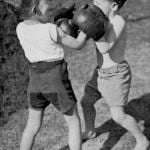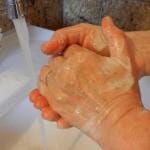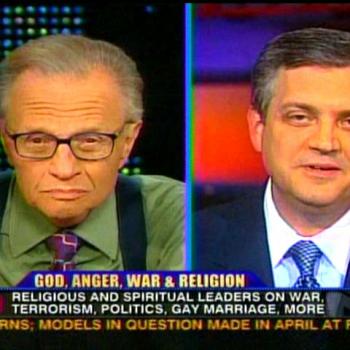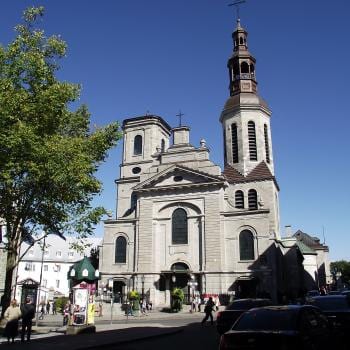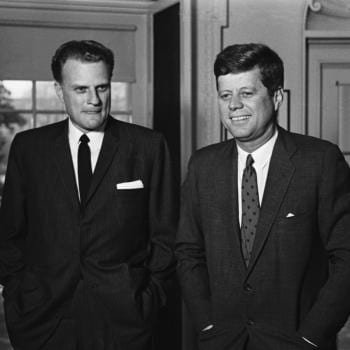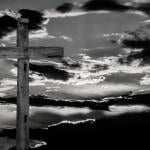As things stand on April 9, 2020, somewhere on the curves of COVID-19, America is not safe. Heck, the world is unsafe. Maybe people are locked in (without too many threats from police or magistrates). With so many businesses and institutions closed, people have no reason to go out. But as the climate in North America does its impersonation of Spring and as people tire of either killing time at or working from home, political authorities and their freedom-liking subjects are going to have to go out and try to put together something like a normal existence.
The question is, will it be safe to go back to work, have a meal, watch a ball game, attend a class? Safety versus risk is the constant theme of officials briefing the press and in news coverage of the pandemic:
Cuomo noted that the number of positive coronavirus cases and deaths across the state continue to rise, although there are signs that they are beginning to level off. Despite that glimmer of hope, however, the governor said schools and non-essential businesses will remain closed through April 29 because the pandemic still makes it unsafe to resume normal life.
The governor also rightfully decided to play hardball with violators of social distancing rules by doubling down on the punishment – doubling the fine to $1,000.
“Frankly, there has been a laxness on social distancing, especially over this past weekend,” Cuomo said, noting rising numbers of New Yorkers coming out as the weather warmed. “That is just wholly unacceptable.”
He said they run the risk of becoming infected, going to the emergency room, and exposing many others by such a lack of responsibility.
You may wonder how risky it is to disobey orders since social distancing makes the legal process of collecting fines a challenge. Someone will have to get close to you to bring you to court, to take you to jail, to issue you a summons.
It seems like ancient history now, but four years ago Americans were thinking hard about safety on American campuses and whether university and college students who needed “safe spaces” were snowflakes. Back then, we had different definitions of safe. One was a safety to take risks:
Harvard psychology professor Mahzarin Banaji described this concept. She explained, “It is my job to tell people to feel uncomfortable, to squirm, to go back and think hard about where they come from and so on. And now I’m being told that when I say that, I’m making somebody possibly uncomfortable. And I’ve argued forever this is a safe room in which we can say anything, and we will deal with it.”
Another could not keep straight whether physical or psychological safety was in view:
the term “safe space” also came up recently in a very different context: the horrific mass shooting that killed 49 people at the Pulse nightclub in Orlando. Gay clubs like Pulse are supposed to be “safe spaces,” where LGBTQ people can feel welcome and accepted in an often-intolerant world. The violation of that space was a terrible reminder of what that intolerance can lead to.
No space can ever be 100 percent safe — but this is much more true for some groups of people than others. As Vox’s Alex Abad-Santos observed, “The feeling of safety in a gay bar and actual safety are two different things. Though they are connected, there’s no such thing as a safe space for LGBTQ people. LGBTQ people know this better than anyone. We live it, and our history is marred by it.”
For people in marginalized groups, psychological safety (or what some would call “coddling”) and physical safety are closely related and not easy to separate. That’s where the concept of safe spaces is rooted in the first place, and that’s why the need to have them is so powerful for so many.
Malcolm Harris has a good brief history of the term “safe space” at Fusion. He cites scholar and activist Moira Kenney’s book Mapping Gay L.A. to explain that the term originated in gay and lesbian bars in the mid-1960s:
With anti-sodomy laws still in effect, a safe space meant somewhere you could be out and in good company — at least until the cops showed up. Gay bars were not “safe” in the sense of being free from risk, nor were they “safe” as in reserved. A safe place was where people could find practical resistance to political and social repression.
Try finding a space like that today in the United States. Has anyone considered the effects of locking marginalized people down in unsafe spaces?
Everyone (except maybe small children) seems to accept that life is risky, though that awareness does not apply to this virus (whether on a personal or official level). I take my life into my hands when I descend the stairs in the dark early each morning to turn on the coffee pot. I could misstep, trip on the stairs, fall, and break my neck. The can of cat food I open to feed the little ones could gouge my finger (it has) and if I don’t get a tetanus shot I could suffer from muscle contractions that prevent breathing and cause death. Of course, when I drive, I take my life into my hands since approximately 1.25 million people die each year in auto accidents. The list goes on.
But even when it comes to this pandemic and the policies implemented to stop its spread, flatten the curve, and protect the health care system, I am allowed the risk of going to the supermarket to purchase the necessities of life (and an extra helping of wants). My governor, Gretchen Whitmer, believes I may risk my own life and that of my wife by going to the local Kroger, a story that services a county of roughly 8,000 people in a county with 64 cases and 6 COVID-19 related deaths. Does the governor really care about me? Even if I opt for home delivery, surfaces of boxes, bags, cans, and containers, not to mention the person bring groceries to the door, may bring the virus into our home. That is a risk all of us are taking.
Which means even now in lock down we are unsafe. There are no safe spaces in the world.
The question is when we will have the fortitude to go back out and take even more risks. For six millennia the human race has never demanded complete safety. Only five years ago that fear seemed to be limited to Gen-Z. It looks like we were wrong. We’re all snowflakes now.

